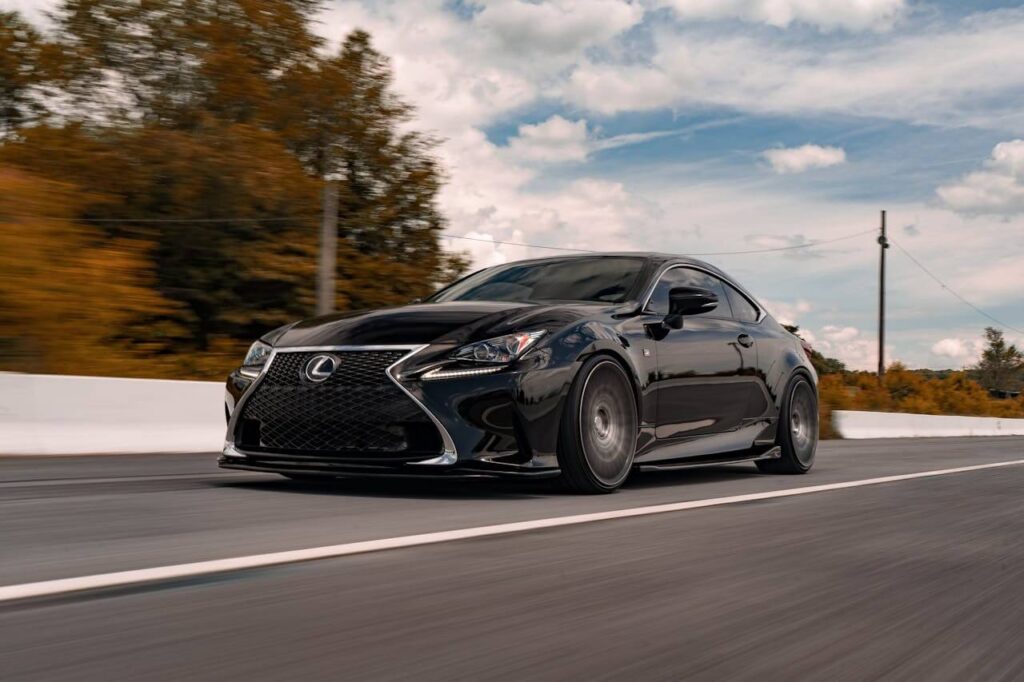How to Clean a Car After Body Repair ?
How to Clean a Car After Body Repair : After getting your car back from the body shop, the natural next step is to make it look as good as new again. Understanding how to clean a car after body repair is crucial—not only for appearance but also to preserve the newly repaired paint and ensure long-term durability of the work done. Many car owners make the mistake of rushing into automatic washes or using harsh chemicals too soon, which can harm fresh paint or compromise refinishing work.
This article will walk you through a detailed, step-by-step guide on how to safely and effectively clean your car after a body repair. You’ll learn about the appropriate waiting times, gentle cleaning techniques, recommended products, and maintenance tips to extend the life of your vehicle’s new finish. Whether you’ve had a fender replaced, dents pulled out, or a full-body repaint, this guide has you covered.
By the end of this article, you’ll know:
- When it’s safe to wash your car after repair
- The best materials and products to use
- The correct techniques to avoid damage
- How to maintain the paint’s longevity
- What to avoid during the early post-repair period

1. Understanding Post-Repair Surfaces
What Happens During a Body Repair?
When a car undergoes body repair, technicians typically work on areas that include repainting, buffing, polishing, and sealing. New paint may need time to fully cure and bond to the surface. Most professional auto body shops apply a clear coat over the new paint, but this layer is still vulnerable in the first few weeks.
Why the Surface Is Delicate Post-Repair
New paint doesn’t fully harden instantly. It requires curing, either through heat treatment or air drying, depending on the shop’s method. During this curing period, the surface is susceptible to scratches, swirl marks, and chemical burns. Therefore, understanding how to clean a car after body repair requires a more careful approach than your regular car wash routine.
2. When Can You Wash a Car After Body Repair?
General Waiting Period
One of the most common questions is: “How long should I wait before washing my car after body repair?” The standard recommendation is to wait at least 30 days before performing a full wash with soap, wax, or polish. However, light dusting or rinsing with plain water is often acceptable after 48 to 72 hours.
Check with the Repair Shop
Always consult your body shop for specific guidelines. Some paints are cured in baking booths and may allow earlier cleaning. Others, especially air-dried finishes, need more time.
Why Waiting Matters
Washing or waxing too early can trap moisture under the surface, leading to bubbles or hazing. Using improper tools can also scratch the soft surface.
3. Supplies You’ll Need for Cleaning
Essential Cleaning Tools:
- Microfiber wash mitts
- Soft drying towels
- Two buckets (one for soap, one for rinse)
- pH-neutral car shampoo
- Hose with spray nozzle
- Filtered or deionized water (if possible)
Optional (but Helpful) Supplies:
- Touchless car dryer or leaf blower
- Clay bar (after full curing)
- Soft detailing brushes for trim and vents
Using the right supplies is critical when learning how to clean a car after body repair. Avoid harsh sponges or brushes that can abrade the new finish.
4. Step-by-Step Guide on How to Clean a Car After Body Repair
Step 1: Pre-Rinse
Start with a gentle rinse using plain water to remove loose dirt. Do not use high-pressure washers, especially near seams or repaired areas.
Step 2: Prepare a Mild Soapy Solution
Mix a pH-balanced car shampoo in one bucket. Fill the second bucket with plain water for rinsing your mitt.
Step 3: Use a Microfiber Mitt
Dip your microfiber mitt in the soapy water, then wash the car in straight-line motions. Avoid circular movements that can cause swirl marks. Focus on small sections.
Step 4: Rinse Immediately
Rinse each section as you go to prevent soap from drying on the paint. Never let water or soap sit too long on fresh surfaces.
Step 5: Dry Gently
Use a clean, soft microfiber drying towel to pat (not rub) the surface dry. A touchless blower can help prevent streaks or water spots.
Step 6: Spot Clean if Needed
For bird droppings or bug splatter, use a gentle cleaner designed for automotive use. Avoid scraping or rubbing aggressively.
Step 7: Skip the Wax (for Now)
Do not apply wax, sealants, or ceramic coatings for at least 60–90 days unless your repair shop tells you otherwise. These can block paint from curing properly.
5. Common Mistakes to Avoid
Mistake 1: Washing Too Early
As mentioned earlier, washing within the first 48 hours can damage uncured paint. Always wait at least a few days before even rinsing.
Mistake 2: Using Abrasive Materials
Avoid rough cloths, brushes, or old towels. These can leave permanent marks on soft paint.
Mistake 3: Waxing or Polishing Too Soon
Polish and wax contain solvents that can interfere with curing. Only use them after full hardening.
Mistake 4: Automatic Car Washes
Avoid commercial car washes—especially those with brushes—for the first few months. Even “soft-touch” systems can be too harsh.
Mistake 5: Ignoring the Weather
Don’t wash your car in direct sunlight or on hot surfaces. This can cause streaks or water spots.
6. Tips to Protect New Paintwork
Use a Car Cover
If you park outdoors, a breathable car cover can protect your fresh paint from UV rays, rain, and pollutants.
Park in Shade or Indoors
Direct sunlight can accelerate paint degradation, especially during the curing period.
Wash More Frequently (Gently)
Light dust or pollen should be rinsed regularly to avoid buildup. But remember to always use safe materials.
Apply Ceramic Coating (Later)
After the curing period (typically 90 days), a ceramic coating can add long-term protection and make future cleaning easier.
7. How Often Should You Clean It?
During the First 30 Days:
- Light rinsing only
- No waxes, sealants, or polishes
- Avoid pressure washers
After 30 to 90 Days:
- Gentle hand washes every 2–3 weeks
- Still no polish or wax unless permitted by your technician
After 90 Days:
- Return to a normal wash schedule
- You may now use waxes, ceramic coatings, and detailing sprays
Conclusion
Knowing how to clean a car after body repair is about more than just keeping it shiny—it’s about preserving the quality of the repair, avoiding damage, and ensuring your investment lasts. Always follow the waiting period guidelines, use soft and non-abrasive materials, and avoid products that can interfere with the curing process.
The good news is that with proper care, your car can look showroom-fresh long after you leave the body shop. Be gentle, be patient, and follow the professional recommendations shared in this guide.How to Clean a Car After Body Repair ?
FAQs : How to Clean a Car After Body Repair
1. How to clean a car after body repair without damaging the paint? Use a microfiber mitt, pH-neutral soap, and rinse with gentle water pressure. Avoid waxes or polish until the paint fully cures.
2. Can I go to a car wash after body repair? No. Avoid automatic car washes for at least 60–90 days. Hand washing is safer.
3. What soap should I use on a freshly painted car? Use a pH-balanced, non-abrasive automotive shampoo with no added wax or polish.
4. When can I wax my car after body repair? Typically after 60–90 days, depending on the paint type and curing process.
5. Is rain bad for a newly repaired car? Rainwater isn’t ideal during the curing period. A breathable cover can help protect it.
6. How do I remove bird droppings safely? Soften with warm water, then dab gently with a microfiber cloth. Do not scrub.
7. Should I dry the car with a towel or air dry? Use a soft microfiber towel to blot dry or a blower to avoid touching the paint.
8. Can I use a clay bar on new paint? Wait until the paint has cured completely (usually after 90 days).
9. Why does my car look hazy after washing? This could be due to incomplete curing, poor drying techniques, or residue from soap.
10. What if the car still smells like paint? That’s normal and indicates the curing process is ongoing. Ensure ventilation and avoid enclosed spaces.
11. Can I polish the car after bodywork? Polishing should be delayed until the paint has fully hardened—generally 60–90 days.
12. How often should I clean the car after repair? Rinse lightly as needed during the first month. Resume a normal schedule after 90 days.
13. Does washing too soon void my repair warranty? In some cases, yes. Always follow your repair shop’s guidelines.
14. Are touchless car washes safe post-repair? They may be safer than brush-style washes but still not recommended in the first 60 days.
15. Can I use detailing spray on new paint? Avoid detailing sprays with wax or polymers for the first 60 days.
Read also :
How to trade-in a car that is not paid off
# How to Clean a Car After Body Repair
